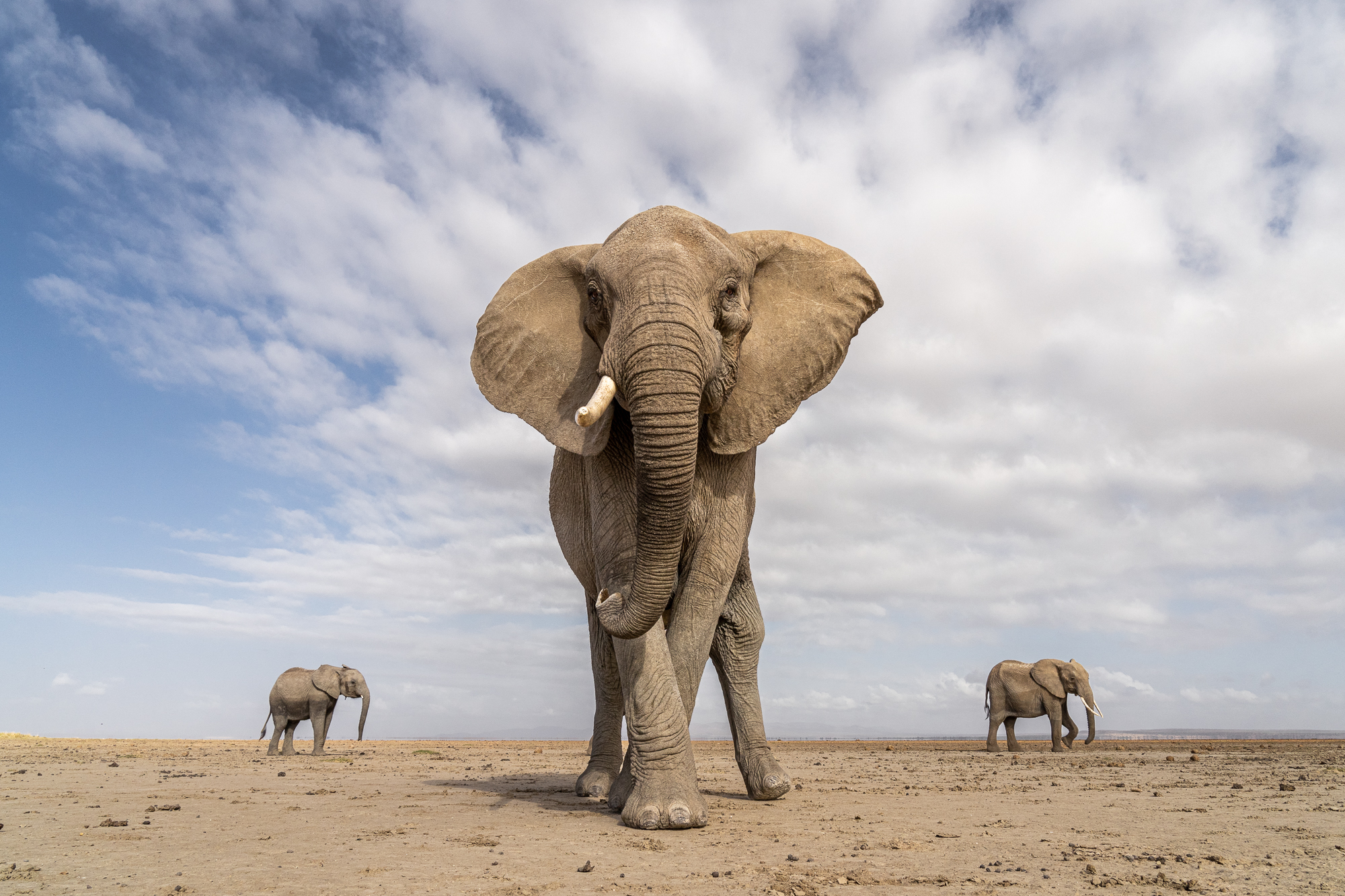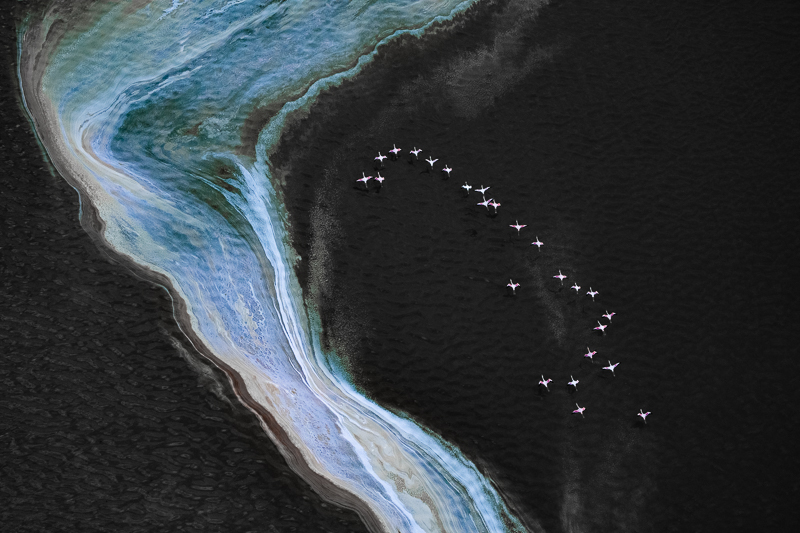Landing in Nairobi last month, my usual fears were running amok. Would my luggage arrive with me? Would I have problems at customs? Would the bartender at the first camp be able to make me a decent Old Fashioned, of which I was desperately in need? You know the ones. But most heavy of all, the one weighing me down after so many safaris that I’ve now lost count, was this: would the work—the photographs—be good?
Or would I just do what I’ve done before, unable to find a new angle or shake off the old ways? Would I end up mowing the same patch of grass over and over, which is a real risk in any pursuit at which one begins to find some level of comfort or success?
I didn’t go to Kenya to make larger, sharper versions of the photographs I’ve made before. I went to make photographs that were, well, see, that’s the problem; I had no idea. I’ve grown in the last year, and creatively, I’m almost unrecognizable since I did my first safari in 2009. I wanted photographs that were more, I don’t know . . . visceral. Photographs that evoked more, if to no one else but me. In the back of my head, I heard the echo of something Jay Maisel once said: if you want more interesting pictures, then be a more interesting person.
My slightly adjusted version goes like this: if you want more interesting photographs, have more interesting experiences. Try something new.
Fortunately for me, I’d planned an itinerary that gave me some options where new and interesting experiences were concerned. For one, I’d planned for three nights at a rhino conservancy in the north, a place suggested to me by my guide in Nairobi the year before because I’d be allowed to get my cameras closer to the rhino than ever before. I’d also planned for four nights in Amboseli, known for large tuskers walking daily across the lake bed in front of Mt. Kilimanjaro, and then two nights in the south, where I’d booked some helicopter time to get me over the soda lakes known for colourful swirls of algae blooms and flocks of bright pink greater flamingos.
I had a blast. It was the most fun I’ve had with cameras in my hand in a while. But it was also (and here I’m coming around to my point) really hard. It was so outside my comfort zone that I felt like I was starting over. The helicopter especially had a way of making me stupid, like I’d never held a camera in my hand before. But it was all different. Walking with a wild elephant and then (somewhat counterintuitively) lying down in front of him as he approached is not a skill I’ve already learned. There’s no eBook for that; you just do it. You figure it out (mostly, what you figure out is how to hold the camera still and not soil your pants while still composing your shot).

The rhinos were different. One doesn’t (I am told) lie down in front of rhinos. But back in Nairobi, a friend had given me a metal cage that was just large enough to put my camera in—a contraption designed exactly for this purpose, and he suggested I give it a whirl. “Your guides will help you get it where you need it,” he said, and then I ran off to download a remote app to connect my Sony A1 to my iPhone, giggling like a little boy at the thought of getting my cameras so close to something so large.
A couple of weeks later, I was working with two guides whose skill was matched only by their patience as we worked to get the cage into the path of southern white rhinoceroses while fighting the very buggy remote software and trying at the same time to pay attention to composition and moment and keep my fingers crossed that at some point it would all come together. Most of the time, it didn’t. The connection between camera and iPhone would drop, the rhinos would go the other way, or they’d walk past it, tipping it over as they went. But I didn’t need it to work all of the time; the times it all goes wrong don’t matter (though they teach good lessons)—I only needed it to work sometimes, and it did. Brilliantly.
I had three nights to get the rhinos right. That meant focusing. It meant saying no when the radio was buzzing with news of a leopard or pride of lions. It meant going out each morning before dawn and returning after sunset, and skipping the traditional cocktail as the sun went down. It meant the answer was always yes when one of my wonderful guides smiled at me and said, “Shall we try just one more time?” (knowing he’d be saying it again and again until the light was long gone).
There’s an opportunity cost involved in being focused. What if the lion or leopard sighting was amazing? It takes some discipline to stick to the task, especially when the rhinos (and the remote software) have a strong mind of their own and the task isn’t looking promising. This was well outside my comfort zone, and when things weren’t working, it meant I was missing two shots: the one I was working on (i.e., screwing up) and the one I was saying no to elsewhere—the one with the three-legged leopard juggling five warthogs in perfect light.

The aerial photography was mind-blowing. Lake Magadi is a soda lake in southern Kenya, sitting a couple of kilometres from the Tanzanian border. The pH in the lake makes it prone to incredible algae blooms, and the results are bright and shifting colourful swirls. I was there to photograph these patterns with flamingos (fingers crossed) flying over them to give scale and life. How hard could it be? Well, it turns out there’s a huge learning curve. Time of day matters. Light matters. Keeping your shit together long enough to consider composition while the helicopter banks hard enough to make you reconsider your lunch choices matters, too. It’s just not easy. It crossed my mind several times that I could be making safer photographs (and certainly a little easier) back on the ground.

The best photographs I’ve made in the last 37 years have all included an element of risk. Sometimes that risk was physical, but most often, it was creative or psychological. The risk is often that the person I want to photograph will say no, or the photographs will be crap. The risk is that taking the time try a new approach means you’ll be missing the chance to do the stuff that does work. The tried and true. Sure, you’ll be repeating yourself, but better to go home with some version of what you’ve done before than nothing at all, right?
I don’t think so. I guess there’s an argument to be made to get your safety shots but is “safe” the best we can do? Is the goal of all this the creation of a photograph that’s only slightly different than the one you made before? I mean, if you liked the last one, you’ll like the next one, right? Perhaps. But I’ve found there is a law of diminishing returns at work, and I’m generally less satisfied with the same old stuff, even if the image is technically better. It just doesn’t thrill me. More importantly, I’ve found the risks that scare me are the ones most guaranteed to teach me some new thing, a new skill, or even just give me the proof that I really can do this. They’re the opportunities for a new challenge, and challenge—risk!—is necessary for creative flow. It’s where we do our best work.
Your risk is not my risk. Some of you will never feel the need to lie down in front of an elephant (in the company of guides and spotters who knew what they were doing). Some of you have no interest in helicopters or learning to use an iPhone to control your camera. I wasn’t even sure I wanted to bother with the remote trigger thing. Too fussy, I thought. Too unpredictable. The results were too uncertain. Of course they were uncertain! It’s all uncertain! And that’s where we learn, grow, and find ourselves face-to-face with the unexpected. That’s where we find ourselves outside the rut we’ve been in, and it’s where we find—unexpectedly—a new groove. Those are the experiences I’m after.
Science disproves the idea that you can’t teach an old dog new tricks. We old dogs (some older than others) are, in fact, much more teachable. We’ve learned how to learn. We’ve got less to lose. But oh, are we timid at times.
It’s just easier to do what we’ve done and what we know works for us. But is it still working? The same-old, same-old? Is it still challenging you? Does it bring you the same rewards or joys? Or could the same-old be a foundation on which to build something new? A launching point for new experiences?
My own version of same-old is what gave me the muscle memory to do what I needed to do with the camera when I was otherwise distracted by the huge tusker in front of me. It gave me the recall and the instinct to do what I needed to do in the helicopter without thinking so I could focus more on the art direction than not falling out or trying to remember how to change my settings.
To return to my point, the magic is outside the comfort zone. Sometimes we’re forced there, but most often, we need to choose it. New experiences, new technology, new creative challenges, and new ideas—new tricks for old dogs. Maybe for you, it’s photographing people. Ack! Are you kidding? That’s terrifying! Exactly.
Maybe it’s as simple as changing the time of day during which you photograph. What? Photograph at night? But I don’t know how! Precisely. Maybe it’s time to learn to use strobes, create multiple exposures, or explore ICM. But what if I fail? Yup. But what if you don’t? And what’s “failure,” anyway? Don’t you mean, “But what if I learn?”
A good photograph is the product of many things. Light and our choices about it. Use of space and time. What we do with colour and perspective. Our choice of optics. Yes, sometimes it’s also the gear. A good photograph happens at the intersection of so many things, to which I want to add one more: risk. Play with the light, the gear, your point of view, and the choice of moment. Play with it all, because we learn when we play. But don’t play it safe.
I’d love to answer questions about any of this. Using remote triggers or helicopters, or if you just want to say hello, you can do that on my blog here. I’d love to hear from you.
Source link



Leave a Reply